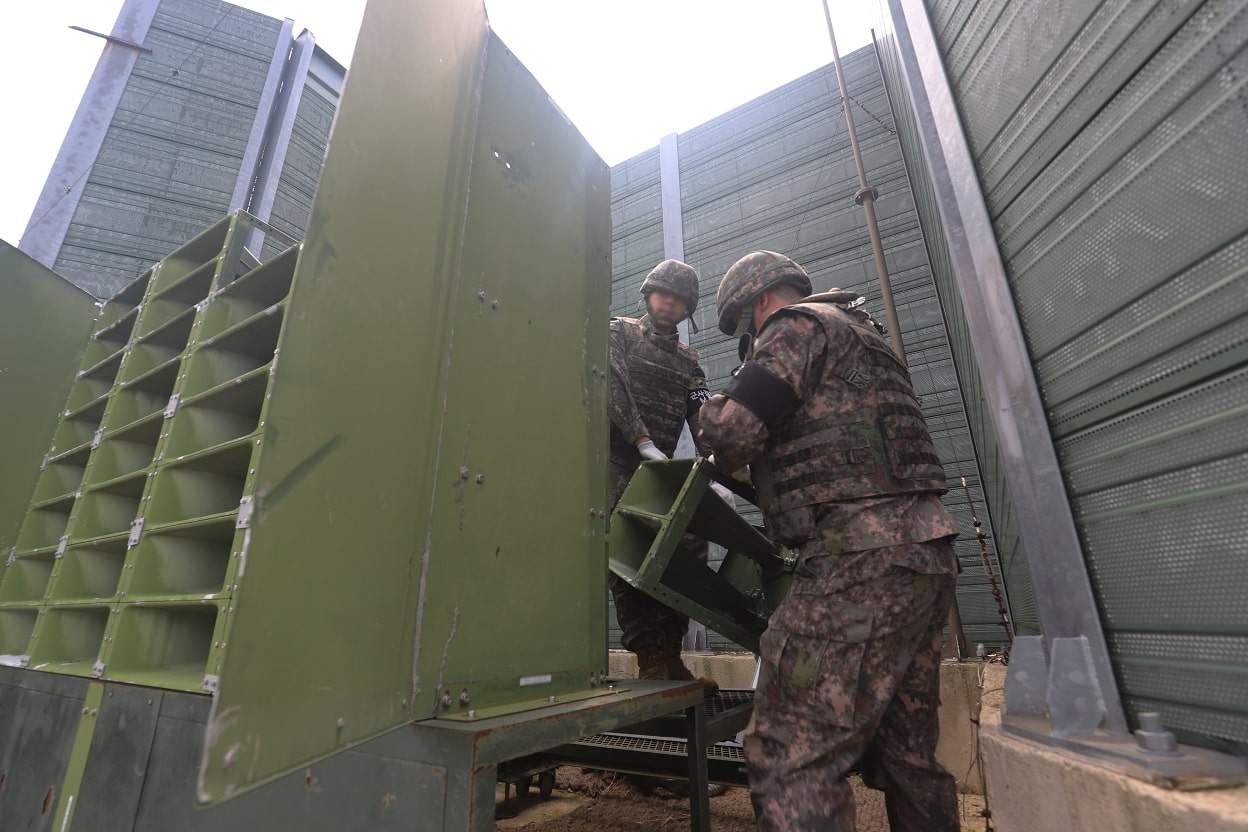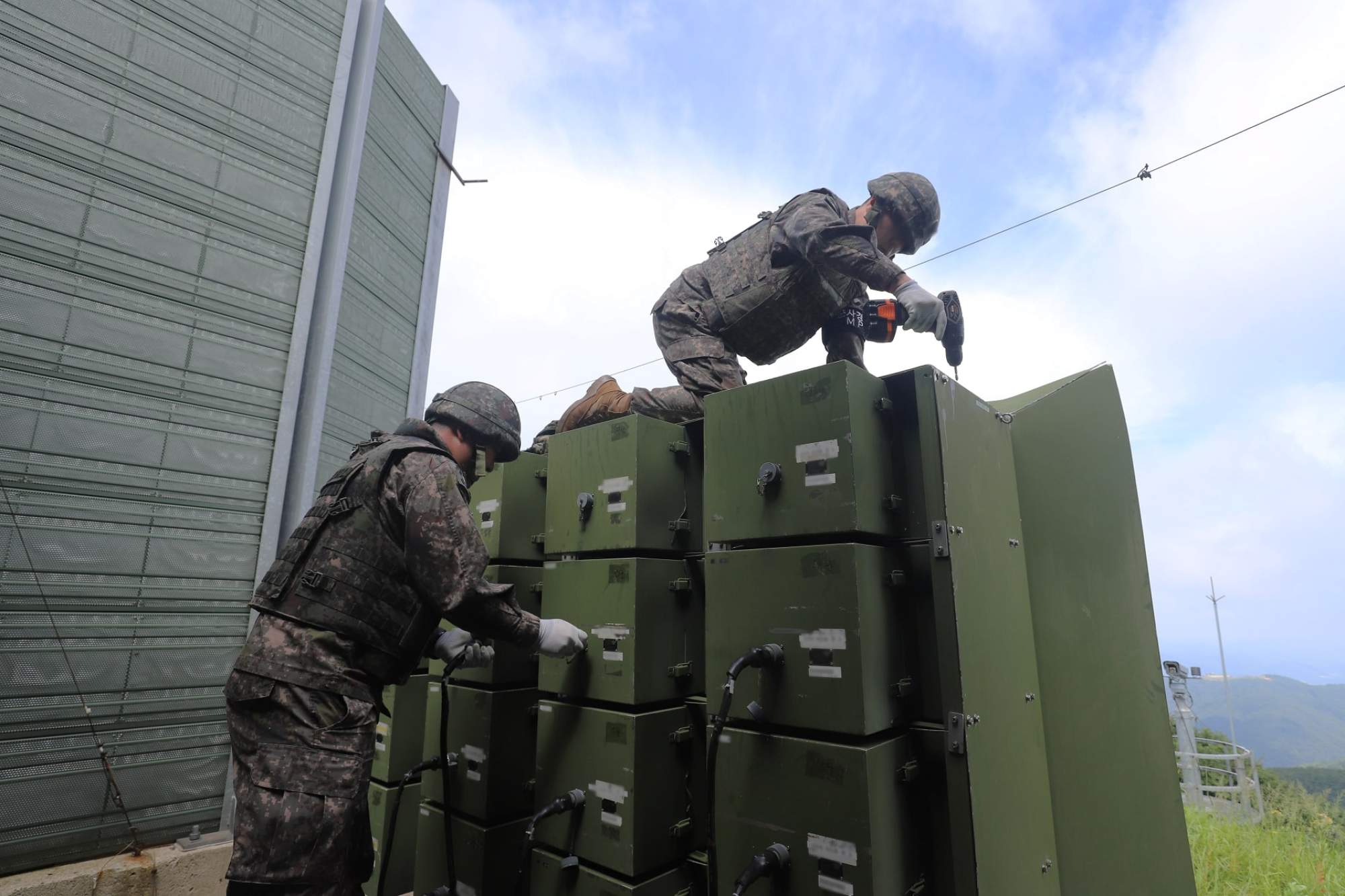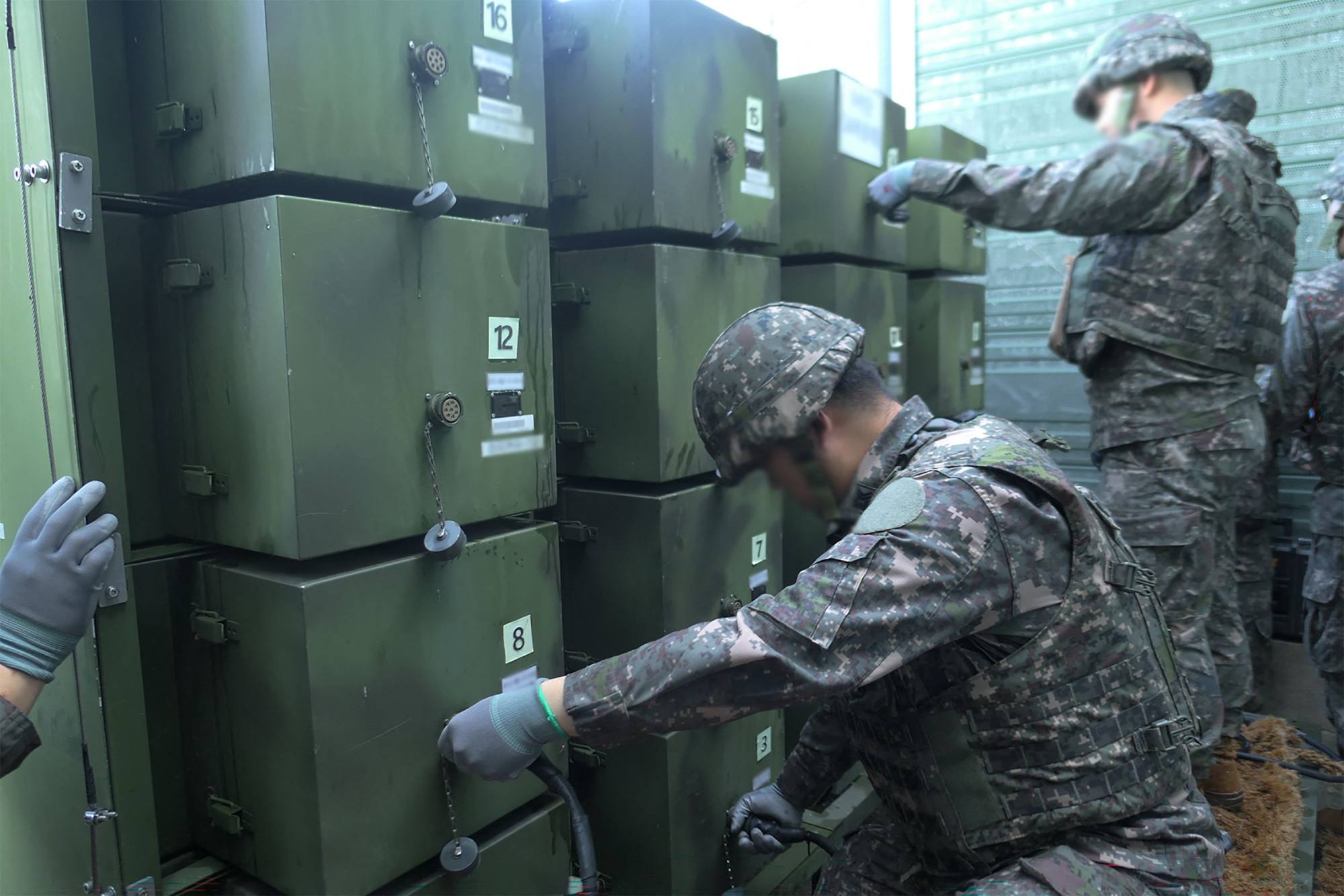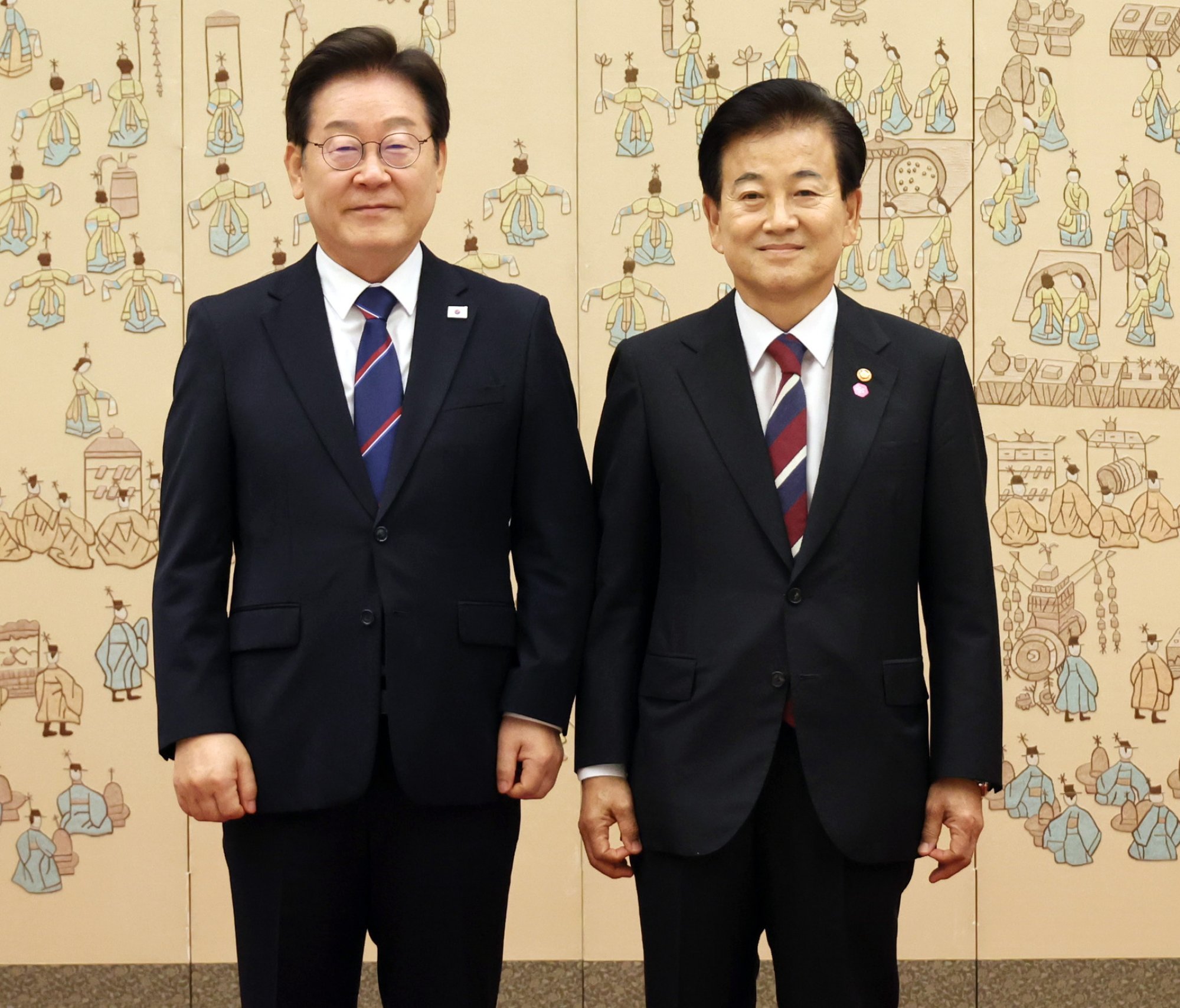Strategic silence: South Korea removes border loudspeakers in push for peace
While Seoul hopes the gesture might reopen channels for engagement, officials report no sign of North Korea reciprocating

South Korean soldiers on Monday began quietly dismantling towering propaganda loudspeakers that used to blare propaganda across the border, marking the most tangible step yet in President Lee Jae-myung’s drive to de-escalate tensions and revive the prospect of inter-Korean dialogue.
The move came despite a sharp rebuke from Kim Yo-jong, the powerful and influential sister of North Korean leader Kim Jong-un, who last week dismissed Seoul’s outreach efforts as “sentimental words” and insisted that Pyongyang had no interest in reconciliation.
South Korean military crews started removing the loudspeakers and associated equipment on Monday, roughly two months after their broadcasts were halted. “This is a practical measure that can help ease inter-Korean tensions without affecting the military’s readiness posture,” the Defence Ministry said in a statement.

The dismantling process will take about a week and cover 20 sites along the 250km (155-mile) border dividing the Korean peninsula, according to Defence Ministry spokesman Colonel Lee Kyung-ho, who told reporters that there was no prior consultation with North Korea.
When asked whether Pyongyang might reciprocate by dismantling its own loudspeakers, a spokesman for South Korea’s Joint Chiefs of Staff said there were no such indications.
“North Korea appears to be conducting maintenance work on its loudspeakers, but no signs of dismantling have been detected,” Colonel Lee Sung-jun said. “No unusual movement by the North Korean military has been observed so far.”
‘Friendly atmosphere’
Dismantling the speakers sent a strong signal of Seoul’s intent to reduce tensions in an “irreversible” manner, said Yang Moo-jin, president of the University of North Korean Studies.
“This is a proactive, long-term step by the South to create a friendly atmosphere ahead of any possible resumption of dialogue,” he told This Week in Asia.
Yang suggested Seoul’s next steps could include suspending live-fire drills near the border or taking further unilateral actions to revive the 2018 inter-Korean military agreement – a pact effectively abandoned last year amid escalating tensions.
That landmark agreement, signed during a rare period of rapprochement, included measures such as dismantling border loudspeakers, establishing buffer zones on land, sea and air, and banning live-fire drills and aerial surveillance near the demilitarised zone. It also prohibited hostile acts such as the launch of leaflet balloons.
However, the framework began to unravel in November 2023, when the Constitutional Court struck down the provision that had effectively banned leaflets from being flown across the border.
Then president Yoon Suk-yeol’s administration also resumed reconnaissance flights in response to North Korea’s military satellite launch. Pyongyang retaliated with blaring broadcasts of jarring sounds and waves of garbage-filled balloons floated across the border – psychological tactics observers said were intended to provoke and unsettle the South.
South Korea reinstalled its loudspeakers last June and resumed border broadcasts for the first time in six years, responding directly to the North’s balloon campaign. The loudspeaker broadcasts had only previously been used intermittently, particularly following North Korea’s last nuclear test in 2016.
Since taking office in early June, President Lee has moved swiftly to cool tensions, reversing his predecessor’s confrontational policies, halting the broadcasts, urging civic groups to stop launching anti-regime leaflets and expressing hope that these gestures might reopen channels for engagement.

Pyongyang responded by ceasing its own broadcasts and balloon launches, but has maintained that it has no intention of re-engaging with Seoul.
Still, North Korea has signalled it may be open to talks with the United States, but only if Washington recognises it as a nuclear-armed state, a demand unchanged since the collapse of Kim Jong-un’s 2019 summit with President Donald Trump.
Unhandled type: inline-plus-widget {“type”:”inline-plus-widget”}
Suspicions in Pyongyang about Seoul’s intentions may have deepened following Yoon’s brief martial law decree in December, according to Hong Min of the Korea Institute for National Unification.
Yoon has been accused of seeking to provoke North Korean military action to justify the measure.

Last week, South Korea’s new Unification Minister Chung Dong-young said he would recommend to President Lee that this year’s joint US-South Korea military drills be scaled back to support efforts to stabilise the peninsula.
Yet Hong cautioned that such suggestions might be poorly timed. “Adjustments to the scale of these drills would need to have been finalised months in advance,” he said. “Publicly floating such proposals now risks signalling internal policy divisions to the North.”
Security cooperation, along with recently concluded tariff negotiations, is expected to top the agenda when Lee meets Trump for the first time in Washington, Hong added – possibly as early as this month.